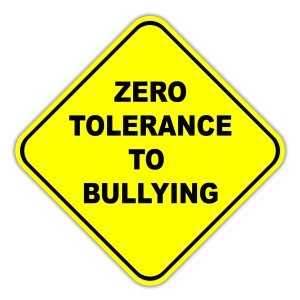 Most of us associate bullies from our childhood – on the playground or at the bus stop. However, bullies remain prevalent throughout our society and exist in all age groups; in our children’s schools, on college campuses, in professional sports teams, and sadly, even in the workplace.
Most of us associate bullies from our childhood – on the playground or at the bus stop. However, bullies remain prevalent throughout our society and exist in all age groups; in our children’s schools, on college campuses, in professional sports teams, and sadly, even in the workplace.
In 2012, the Society for Human Resource Management reported that 51% of the employers it surveyed had incidents of bullying in their workplaces. While severe cases can result in legal challenges and costs for the employer, it can be equally as ‘costly’ for the everyday incidents of workplace bullying. The cost of bullying manifests in the following; increased unwanted turnover, increased absenteeism, reduced productivity, decreased employee morale, and more incidents of stress related health conditions. None of these are good for business. Not to mention the overall perception that when bullying exists in the workplace then respect for one another does not. What should employers do? Employers can help foster a culture of mutual respect in the workplace and avoid the bullies by doing the following; 1) learn how to identify bully-like behavior, and 2) develop a policy to ward off such activity.
1. Forms of bullying behavior;
- Verbal – mean comments, name calling, yelling/shouting, insulting statements, using a person as the butt of jokes, offensive remarks, or malicious gossip.
- Physical – pushing, tripping, kicking, assault, blocking a person’s path, damage to a person’s work area or personal property.
- Gesture – non-verbal offensive or threatening gestures, intimidating or hostile stares/looks, or making faces towards a person.
- Exclusion – socially excluding or purposely disregarding a person in work-related activities.
2. Develop an anti-bullying policy and include the following points;
- a definition of bullying behavior
- identify a reporting process
- outline the efforts to maintain confidentiality
- provide a commitment to non-retaliation of reporting
- communicate the consequences of exhibiting bullying behavior
- provide anti-bullying training (easily added to anti-harassment training)
In addition to the two steps above, the most significant action an employer, and its leadership team, can take is to lead by example. By avoiding the types of behavior that can be identified as that of a bully will help to set the tone for acceptable behavior in the workplace. Don’t make accommodations for bullies – let them know, by way of your policy, that you have a zero tolerance towards bullying in your workplace.
If you have questions or would like to learn more, please reach out to Genesis HR Solutions at AskUs@genesishrsolutions.com or 800-367-8367.
Genesis HR Solutions is the premier PEO provider for Massachusetts based businesses.



